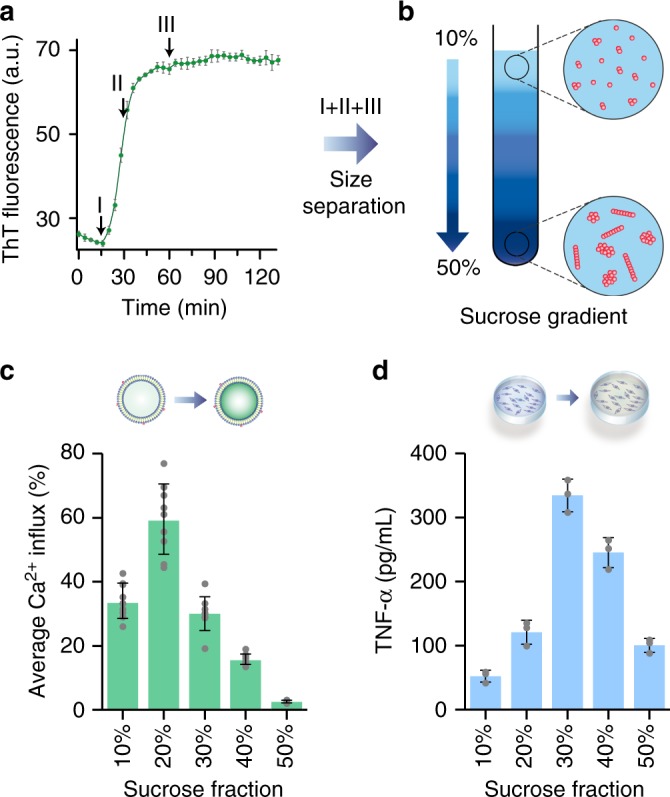Fig. 2.

Aβ42 aggregates of diverse sizes exhibit different relative toxicity by distinct mechanisms. a Aβ42 aggregation monitored by ThT fluorescence. Soluble aggregates formed at different time points were mixed together and separated via a discontinuous sucrose gradient. Three different time points during the aggregation of 2 µM Aβ42 in SSPE buffer at 37 °C were chosen: (i) At the end of the lag phase (15 min), (ii) at the middle of growth phase (30 min) and (iii) during the plateau phase (60 min). b Aliquots collected at these time points were loaded in a step gradient of 10% to 50% sucrose and ultracentrifuged and the fractions were collected immediately and stored. The sizes of the aggregates present within different densities of the sucrose solution increase with the sucrose density. c The lipid bilayer permeability assay shows that aggregates present at 20% sucrose are the most potent at membrane permeation. d Aggregates presents at 30% sucrose are the most effective at inducing inflammation. These experiments were carried out for two independent aggregation reactions of Aβ42 (n = 2) and the error bars represent the standard deviation of the mean for each field of view (for 2C) and for each well (2D). Source data of a, c and d are provided as a Source Data file
